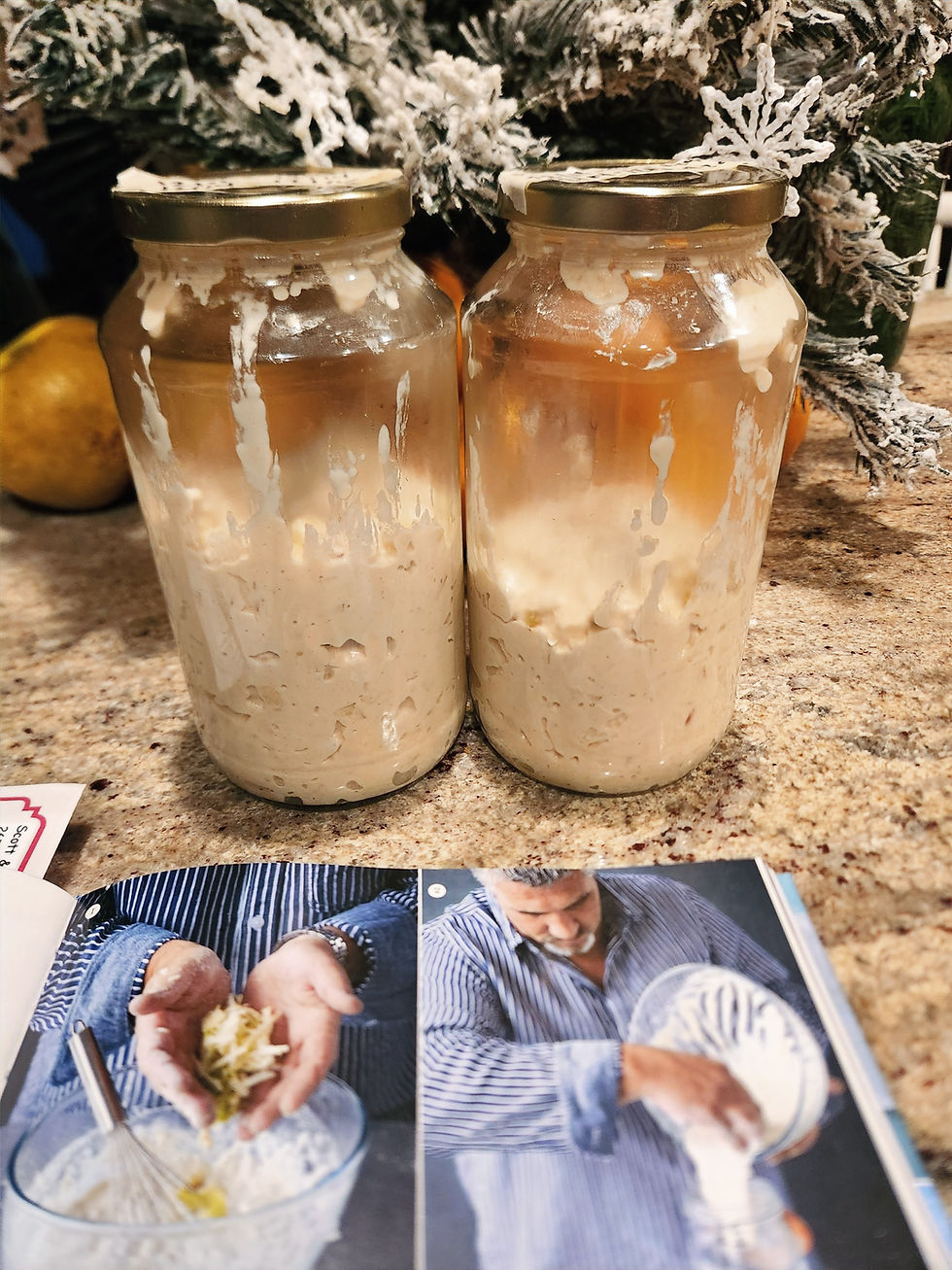Baking My Way Through Paul Hollywood's "How to Bake" - Eighteen: Spitfire Sourdough
- jordanswellness

- Mar 6, 2024
- 4 min read
My personal challenge: baking my way through "How to Bake". This post is my experience baking and learning new skills from tackling each recipe in Paul Hollywood's, "How to Bake". I will also document any recipe changes that I made - mainly as a result of not having the ingredients on hand (i.e., we never have regular sugar in the house) - and how the recipe fared. I will not be providing the recipes that are in his book.
Oh, the holidays! It is absolutely amazing to look back at all of the baking that went down over the holidays. I am incredible surprised that I even made it out of the kitchen to be present for dog walks, workouts, cuddle time with my husband, or any other life things. This particular bake, I also made another sourdough recipe at the same time, and I will add a few more tips on how I spared in another post. This is all about the Spitfire Sourdough.

Like I said, I made this sourdough together with another sourdough recipe. I would definitely recommend baking one at a time, especially if you are new to the sourdough world so that you can give yourself time to make mistakes, learn from your mistakes, and hone in on the perfect starter recipe. Alas, I not only baked two sourdough recipes, but I also used ALL of my sourdough starter. Despite that mistake, keep reading below for more learning lessons from my experience with baking the Spitfire Sourdough from "How to Bake".
Here are some of the lessons that I learned while making the Spitfire Sourdough from "How to Bake":
Patience is Key: Sourdough baking teaches you that good things take time. From cultivating a starter to proofing the dough, each step requires patience and attention to detail. Now, with that said, I would 100% save your starter that you patiently waited to ferment over weeks and I would not use all of it for baking. It gets better with age, and I certainly missed out on this benefit since I made two recipes with all of the starter from "How to Bake".
Consistency Matters: Maintaining a consistent feeding schedule for your sourdough starter and following a precise recipe for your dough leads to better results. Small variations can have a big impact on the final loaf. This could not be more true for the starter, but as far as the loaf itself, I over-worked the sourdough and kneading it WAY too much. I have watched numerous videos since baking this sourdough and learned a gentle touch is best. If not? Beer can affect the gluten development in the dough, leading to issues with texture such as a dense crumb or a lack of rise. To address this, adjust the hydration level of the dough to compensate for the additional liquid from the beer. Additionally, ensure thorough kneading and proper shaping to develop gluten and promote good structure.
Understanding Fermentation: Sourdough is all about fermentation. Learning about the fermentation process helps you understand how different factors like temperature and hydration level affect the flavor and texture of your bread. Beer contains yeast, which can lead to over-fermentation if not properly managed. This can result in an overly sour or dense loaf with a collapsed structure. To avoid this, reduce the amount of additional yeast in the recipe or shorten the fermentation time. Keep a close eye on the dough during proofing and baking. I definitely struggled with this and did not understand that there could be an issue with over-fermentation. What does over-fermentation look like? The dough may become overly acidic and develop a strong, unpleasant sour flavor. It might also collapse during baking, resulting in a dense, flat loaf.
Embrace Experimentation: Sourdough baking encourages experimentation. Whether it's trying different flours, adjusting hydration levels, or experimenting with different proofing times, don't be afraid to experiment and learn from the results. Since baking this bread, I learned that certain types of beer can overpower the natural flavors of sourdough or clash with them, leading to an unpleasant taste. To prevent this, choose a beer with complementary flavors to sourdough, such as a mild ale or a wheat beer. Experiment with different types of beer to find the right balance.
Our Review: Our Spitfire Sourdough was definitely collapsed and tighter in structure than a perfectly baked sourdough, but I was pleased with the texture. We sliced up the sourdough and placed it in the freezer for about a month now. I usually reheat a slice or two and lather it with peanut butter and jelly and it is delicious. I can't complain with my first sourdough attempt, but I look forward to working out some of my mistakes in the kitchen and improving my next bake. To you, good luck!
On that note, I hope that you find a recipe book you enjoy, or this one, that I am currently baking my way through. Either way, enjoy baking and nourishing yourself and your family.
All my light and all my love.
Namaste,
Jordan













Comments